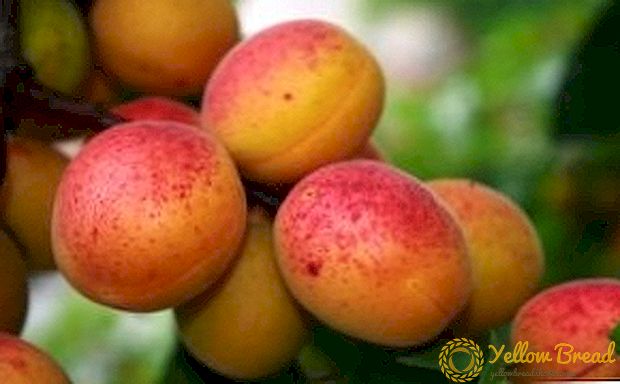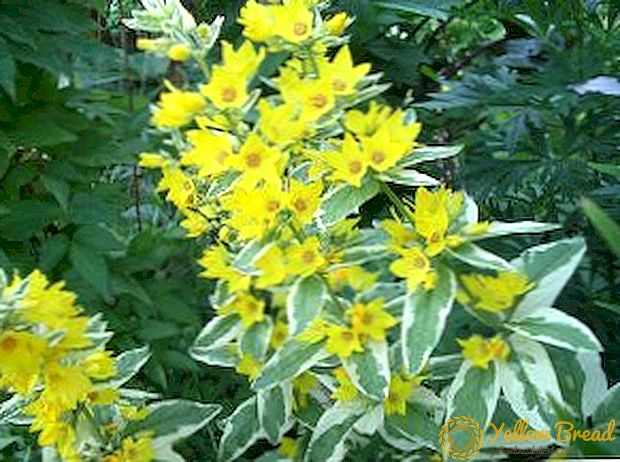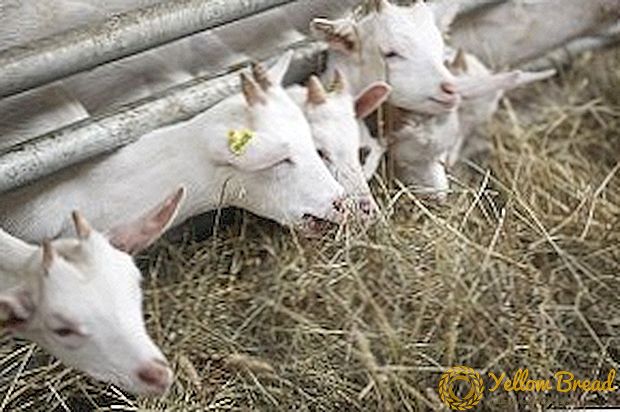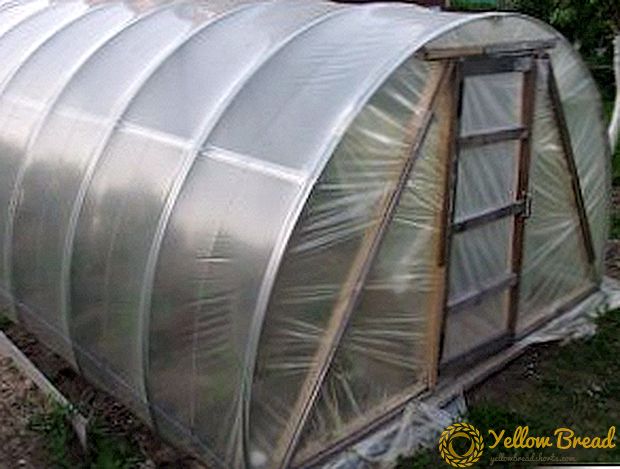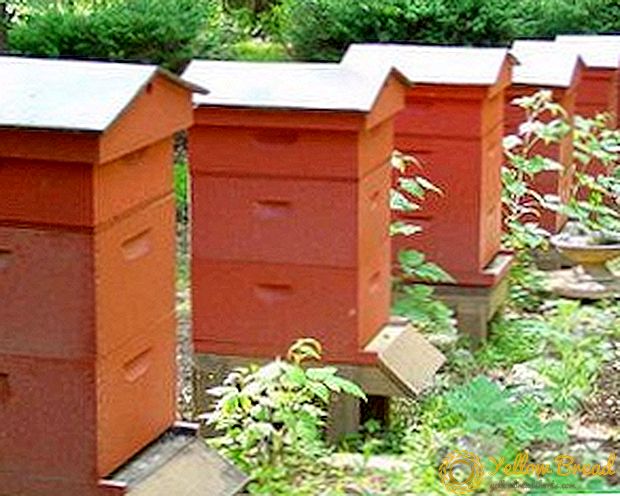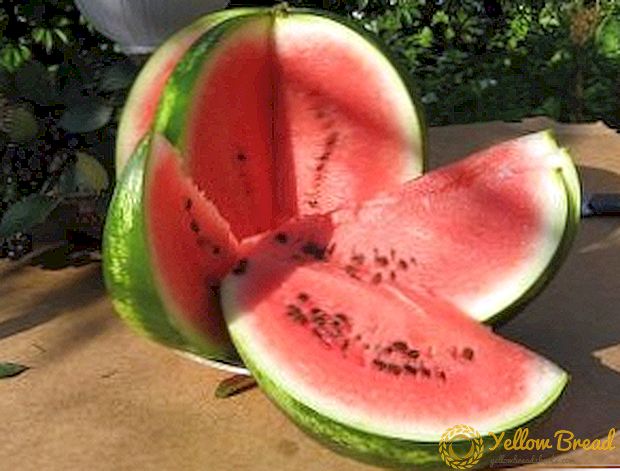 The question of growing watermelons in the country is becoming increasingly important. This berry is a storehouse of nutrients. It contains vitamins and trace elements that are useful in diabetes, diseases of the cardiovascular system, liver and kidneys, not to mention the fact that it is just a very tasty fruit. Like everything else, a watermelon grown on your own plot will be much more beneficial than a purchased one.
The question of growing watermelons in the country is becoming increasingly important. This berry is a storehouse of nutrients. It contains vitamins and trace elements that are useful in diabetes, diseases of the cardiovascular system, liver and kidneys, not to mention the fact that it is just a very tasty fruit. Like everything else, a watermelon grown on your own plot will be much more beneficial than a purchased one.
- How to grow watermelon seedlings
- Growing in a greenhouse
- Growing at home
- Choosing a place for planting watermelons
- How to transplant seedlings in open ground
- Watermelon Care Rules
- Temperature and lighting
- Humidity and watering
- Soil fertilizer
- When to harvest
- Miracle fruit, how to grow a square watermelon
How to grow watermelon seedlings
As you know, if you plant watermelon seeds in open ground too early, you will not be able to harvest the seeds - the seeds will simply rot due to insufficient soil temperature, and if it is too late, they will not have time to ripen before the end of the warm period.The way out for our climate will be the selection of a suitable variety or hybrid, followed by transplanting seedlings.
Growing in a greenhouse
Since watermelons love light, there should be no trees and bushes next to the greenhouse. Seedlings will stay here for about a month before planting watermelons in open ground. During this time, seedlings should not be affected by cold air, therefore, eliminate this possibility in advance. It is worth starting work in the middle of spring. Prepare a suitable substrate. In the first variant, take the land for seedlings and humus (1: 3) and add fertilizers with nitrogen and potassium (half a spoon) and three spoons of fertilizers with phosphorus. In the second variant, add a pot of potassium sulfate and a glass of wood ash to a bucket of soil.
 To properly grow watermelon seedlings, first select suitable seeds. To do this, dip them in brine. Sunken seeds are ideal for germination. Rinse them with water, then soak for half an hour in a solution of manganese and once again dip into the water. Now for 10-30 minutes, leave the seeds in hot water (temperature about + 50-55 ° C), and then germinate to the "naklevyvaniya" stage.
To properly grow watermelon seedlings, first select suitable seeds. To do this, dip them in brine. Sunken seeds are ideal for germination. Rinse them with water, then soak for half an hour in a solution of manganese and once again dip into the water. Now for 10-30 minutes, leave the seeds in hot water (temperature about + 50-55 ° C), and then germinate to the "naklevyvaniya" stage.
The next step will be their landing in separate, half-filled containers (about 10 cm in cross member) to a depth of 2 to 4 cm. Before germination, maintain the desired temperature: in the afternoon at the level of + 23- + 25 ° С, and at night - + 18 ° С. After the shoots seem, for 4-6 days it is necessary to reduce the temperature to a constant value of + 18 ° С. In the future, maintain temperature indicators at + 20- + 25 ° С during the day and + 16- + 18 ° С at night.
Make sure that there is enough space between the containers and the plants do not touch the leaves. Provide adequate lighting: use lamps for 12-14 hours daily. Water the seedlings only with warm water, not often, but in large quantities. Try not to fall on the leaves.
 When there are 10-12 days left before planting, proceed to the hardening of seedlings and open the greenhouse for 1.5-2 hours, gradually increasing the number of hours. Before planting it is necessary to leave the greenhouse open for a day.
When there are 10-12 days left before planting, proceed to the hardening of seedlings and open the greenhouse for 1.5-2 hours, gradually increasing the number of hours. Before planting it is necessary to leave the greenhouse open for a day.
Growing at home
Growing seedlings at home is almost the same as growing in a greenhouse. We need the same substrate and the same seed preparation.Only, after planting in the pots, they should be closed with a plastic film, and after germination, it is better to put the sprouts on the southern windows, where there is more light. There is also no difference in the required heat and light conditions.
 Before planting in open ground (for 7-10 days), seedlings should also be hardened, for this you need to air the plants and lower the temperature to + 15- + 17 ° С during the day and + 12- + 15 ° С at night.
Before planting in open ground (for 7-10 days), seedlings should also be hardened, for this you need to air the plants and lower the temperature to + 15- + 17 ° С during the day and + 12- + 15 ° С at night.
Choosing a place for planting watermelons
It is very important that the place for planting watermelons is well lit. The plant is more suitable light, sandy or sandy soil, preferably neutral or alkaline. Suitable south, southwest of the site. Due to the peculiarities of the root system, the groundwater must be fairly deep. Also take care of protection from cold winds.
How to transplant seedlings in open ground
The technology of growing watermelons in the open field provides for fertilizing the soil since the fall, for which humus or another organic fertilizer (well rotted) is used.In the spring, it remains only to dig up the area well (at least 30 cm deep). You can also create beds with a slope to the south, a height of 15 cm. Holes with a diameter of one meter, located at a distance of about one and a half meters from each other.
 When the time comes without night frosts (usually the end of spring), and the plants will have 3-4 leaves already formed, you can replant the seedlings in open ground. Each well pre-moisten and only after that place there a plant with an earthy clod, prikopayte, but the cotyledon leaves should remain on the surface. For some time, before restoration, saplings should be shaded.
When the time comes without night frosts (usually the end of spring), and the plants will have 3-4 leaves already formed, you can replant the seedlings in open ground. Each well pre-moisten and only after that place there a plant with an earthy clod, prikopayte, but the cotyledon leaves should remain on the surface. For some time, before restoration, saplings should be shaded.
Many experts recommend the first time after planting, as well as in cold nights, to cover the watermelon seedlings under the film, this technology allows you to protect the tender shoots from hypothermia.
Watermelon Care Rules
After transplantation, you should follow the simple rules for the care of the plant, then it will please the rich harvest.
Temperature and lighting
Watermelon is a heat-loving plant. For active life, fertilization of the ovaries, the temperature should not be below + 25 ° C. Already at + 15 ° C, development slows down, and with a sharp cooling, the plant can get sick and even die. In such cases, the previously mentioned film is also used to protect the melon.An equally important factor is the lighting - do not shade the plants. In case of cloudy weather, pollination may become more difficult. In such a case, simply touch some other stamens with flowers.

Humidity and watering
In order to properly care for watermelons you should not water them often, but watering should be abundant. During flowering, the introduction of liquid should occur about once every 3-4 days, and with the start of ripening berries, to obtain juicy fruits, soil moisture should be reduced to 70-75% and watering stopped (except for the absence of precipitation for more than a month). Watering along the grooves, the water should be warm.
Soil fertilizer
After planting, wait two weeks, and then feed the plants with ammonium nitrate, liquid mullein or chicken droppings. Next time fertilizers are applied during the formation of buds. Take calcium chloride, ammonium nitrate, superphosphate in a ratio of 1: 1: 1.5.
When to harvest
Usually, watermelon ripens 30 days after the formation of ovaries. About its maturity will tell you the drying of the bract, the falling of the hairs of the stem, the glossiness of the bark. Also note the color of the pulp and seeds.It is characteristic of each variety and will help determine the state of the first maturity.
 Watermelons are harvested selectively, as they mature, but complete the cleaning before the onset of frost.
Watermelons are harvested selectively, as they mature, but complete the cleaning before the onset of frost.
Miracle fruit, how to grow a square watermelon
Such a miracle was invented in Japan in the 80s of the last century. Square, or rather cubic watermelon can be formed from the berries of any varieties. To do this, you will need a cube measuring 20 × 20 × 20, made of a transparent material, such as plastic. On the upper side there should be a hole about 3 cm. One adjacent side should be removed. In the corners also need holes of 5-8 mm.
 When the watermelon grows to the size of a small ball - place it in a cube, and pass the stem through the hole in the top wall. Increasingly, the berry fills a container and takes a cubic form. But, since it is difficult to predict the size of the fruit, it is often necessary to remove it from the container when it is not ripe, or it can mature earlier and it will not turn out completely square.
When the watermelon grows to the size of a small ball - place it in a cube, and pass the stem through the hole in the top wall. Increasingly, the berry fills a container and takes a cubic form. But, since it is difficult to predict the size of the fruit, it is often necessary to remove it from the container when it is not ripe, or it can mature earlier and it will not turn out completely square.
In any case, this is a very popular and exotic option for special occasions.
You have been collected general information about growing watermelon in the open field. Although for our climate it is not the easiest task, but quite feasible. If you cope with all the difficulties, you will soon be able to enjoy this wonderful fruit from your own plot.

